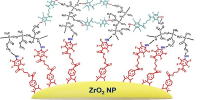Rubber materials’ dynamic behavior refers to how they respond to mechanical forces and deformations over time, particularly under dynamic or cyclic loading conditions. Rubber is a one-of-a-kind material known for its elastic properties, and its behavior is often defined by its ability to undergo large deformations and return to its original shape when the applied force is removed.
Rubber-like materials, which are commonly used in dampeners, have a unique property known as dynamic viscoelasticity, which allows them to convert mechanical energy from vibrations into heat while simultaneously exhibiting spring-like and flow-like behaviors. These materials can be customized by blending them with compounds with specific molecular structures, depending on the dynamic viscosity requirements.
However, the underlying mechanisms underlying these materials’ distinct mechanical properties remain unknown. The lack of a comprehensive system capable of simultaneously measuring mechanical properties and observing the microstructural dynamics of these materials has been a primary cause of this knowledge gap. While X-ray computed tomography (CT) has recently emerged as a promising option for non-destructive inspection of the internal structure of materials down to nanoscale resolutions, it is not suitable for dynamic observation.
By integrating X-ray CT imaging performed at the large synchrotron radiation facility Spring-8(BL20XU) and mechanical analysis under dynamic conditions, we can elucidate the relationship between a material’s internal structure, its dynamic behavior, and its damping properties.
Dr. Matsubara
Against this backdrop, a team of researchers, led by Associate Professor (tenure-track) Masami Matsubara from the School of Creative Science and Engineering at the Faculty of Engineering at Waseda University in Japan, has now developed an innovative system that can conduct dynamic mechanical analysis and dynamic micro X-ray CT imaging simultaneously. Their study was made available online on October 19, 2023, and will be published in Volume 205 of the journal Mechanical Systems and Signal Processing on December 15, 2023.
“By integrating X-ray CT imaging performed at the large synchrotron radiation facility Spring-8(BL20XU) and mechanical analysis under dynamic conditions, we can elucidate the relationship between a material’s internal structure, its dynamic behavior, and its damping properties,” said Dr. Matsubara. The dynamic micro X-ray CT and a specially designed compact shaker developed by the team that is capable of precise adjustment of vibration amplitude and frequency are at the heart of this novel system.
This novel system was used by the researchers to investigate the differences between styrene-butadiene rubber (SBR) and natural rubber (NR), as well as to investigate how the shape and size of ZnO particles influence the dynamic behavior of SBR composites.

The researchers conducted dynamic micro X-ray CT scans on these materials, rotating them during imaging while simultaneously subjecting them to vibrations from the shaker. They then developed histograms of local strain amplitudes by utilizing the local strains extracted from the 3D reconstructed images of the materials’ internal structures. These histograms, in conjunction with the materials’ loss factor, a measure of the inherent damping of a material, were analyzed to understand their dynamic behavior.
When comparing materials SBR and NR, which have significantly different loss factors, the team found no discernible differences between their local strain amplitude histograms. However, the histograms displayed wider strain distributions in the presence of composite particles like ZnO. This suggests that strain within these materials is non-uniform and depends on the shape and size of the particles, which may have masked any changes from the addition of the particles.
“This technology allows us to study the microstructure of rubber and rubber-like materials under dynamic conditions, which could lead to the development of fuel-efficient rubber tires or non-deteriorating gloves. Furthermore, this technology can enable dynamic X-ray CT imaging of living organs that repeatedly deform, such as the heart, and can even pave the way for the development of artificial organs,” says Dr. Matsubara, emphasizing the significance of this research.
Overall, this groundbreaking technology has the potential to advance our understanding of the microstructure of viscoelastic materials, potentially paving the way for the development of novel materials with improved properties.
















